It's certainly time to bring you the rest of the photos and info about our Easter holidays. We are now almost finished term 2 of the school year. Tom is in the midst of marking exams and assignments, and giving final or mid-term grades. Gabriel and Kai had their next cross country meet at the Yarra Glen racecourse, and although they didn't finish as well as they did in the previous race, they finished. Matthew, our principal at FCPS, talked to them about their "personal best", or PB. It's not peanut butter, as the boys suggested. We've all been sick with versions of colds, or a flu, or laryngitis, in my case. Not the swine flu, though, which is the big panic right now in the state of Victoria.
Today we have a forecast of snow for areas above 500 metres, and Ferny Creek is at 570 metres above sea level. And at 3 degrees this morning, it was a cold walk up the hill. Then the rain started driving down. Fortunately one of the school parents offered me a ride home. I put a big chunk of red gum into the wood heater in the main living area, and will likely start sewing on my quilt once I'm done here. The yard is now blanketed in fog, which I love, but it is cold. And no one can understand why we Canadians find this cold... older Australian homes were not built with insulation. Apparently they've only started insulating living spaces in the last decade or so, and we hear many discussions about the viability of adding insulation, protecting from cold and heat. A temperate climate, like that of the Dandenongs and this part of Victoria, would benefit from use of insulation.
Onwards... I do have more pictures loaded onto the blog.
http://picasaweb.google.com/brigittewiebe/ParliamentHouse#
Once we left the banks of the Murray, the countryside to the north got drier. There has been very little rain in the last decade. The area is agricultural, called the Riverina. Home of orchards, citrus groves, and some vineyards as well as cattle and sheep stations. Dependent on irrigation, which is proving a challenge, especially as the federal government is starting to buy back water rights so the population bases to the south (including Melbourne and Adelaide) actually have access to more water.
Along the roads, fields were brown and crumbly, dry. There were some cattle and sheep, many blending into the dun landscape. What were the grazing animals finding to eat? Small trees appeared along a fence -- emus, disguised as trees from the distance, with heads down, finding something, god knows what, to eat. Our next stop was in Wagga Wagga, named by the indigenous Widadjuri people as the "place of many crows" (wagga = crow; repitition of the word = many crows). Two years ago we had accepted an exchange to Wagga Wagga, but it didn't transpire, so we were now curious about may have been. The Murrumbidgee River runs through this town, and we took a stroll, ending up at the local art gallery, exhibiting the work of a local artists' group. The town has a huge cathedral and school right in the centre. Many of the smaller towns have large cathedrals, established in the last 100 years. Our school camp stay in Beechworth was in a former priory, so there certainly is a strong Catholic element in many towns. And Tom's school, Beaconhills, is an Anglican school, but teachers are not required to practise a particular faith in order to teach.
One of our afternoon breaks was in the town of Jerilderie. Love that name! Turns out it has its own Ned Kelly fame. This is the town where the Kelly gang broke into the bank, burning homesteaders' loan documents.
We then went on our way to Canberra, in the Australian Capital Territory. Because of rivalry between Sydney and Melbourne, the government decided to set up the ACT as the home of Australia's federal government. Part of the plans were to build a parliament building that uniquely represented the goals and desires of the Australian federation. In 1988 Parliament House was opened. The architect, Romaldo Giurgola, created a beautiful symbolic representation of Australia's history and landscape. Visitors are provided with tours, and we joined a group. The only Canadians in the group, we were intrigued to see similarities (the Anglo heritage) and differences (elected Senate; fixed terms for sessions and for the elected government). There is strong representation of Australia's Aboriginal heritage, including the request for land and political rights and the Apology that was delivered last year by the Prime Minister. Art work is everywhere, including one of Australia's most famous painters, namely Tom Roberts. (As an aside, it's fun to watch our Tom Roberts being introduced to someone new ... many do a double take on he name!)
The only negative experience we've had with places to say occurred in Canberra. We stayed in a caravan park, as we hadn't tried this form of lodging up to that point and thought it might be fun. The place was weird, negative, and not comfortable. Staff were very uptight and not friendly, which is totally opposite to anything else we've experienced. Don't know why, but when we go back, and we will, as we didn't visit the National Gallery or the War Museum (time pressures...), we will probably stay at the YHA.
Chocolate Banana Squash Muffins
-
Made with Callebaut Dark Chocolate cocoa and chips, Nature’s Farm eggs, and
squash grown by Kelly Ditz, Fair Trade and Local are delicious choices
...
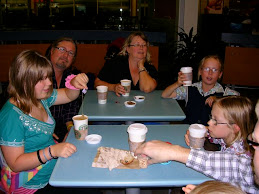
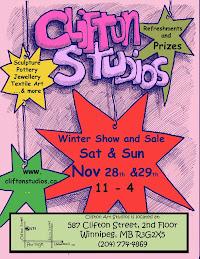
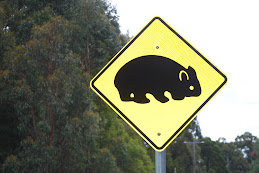
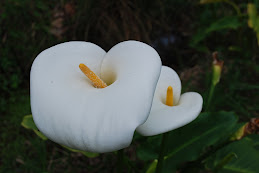
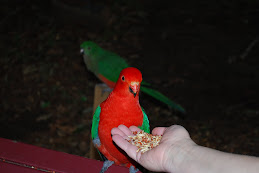
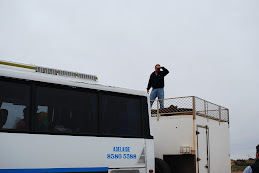



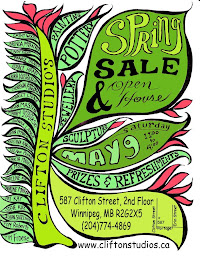


No comments:
Post a Comment